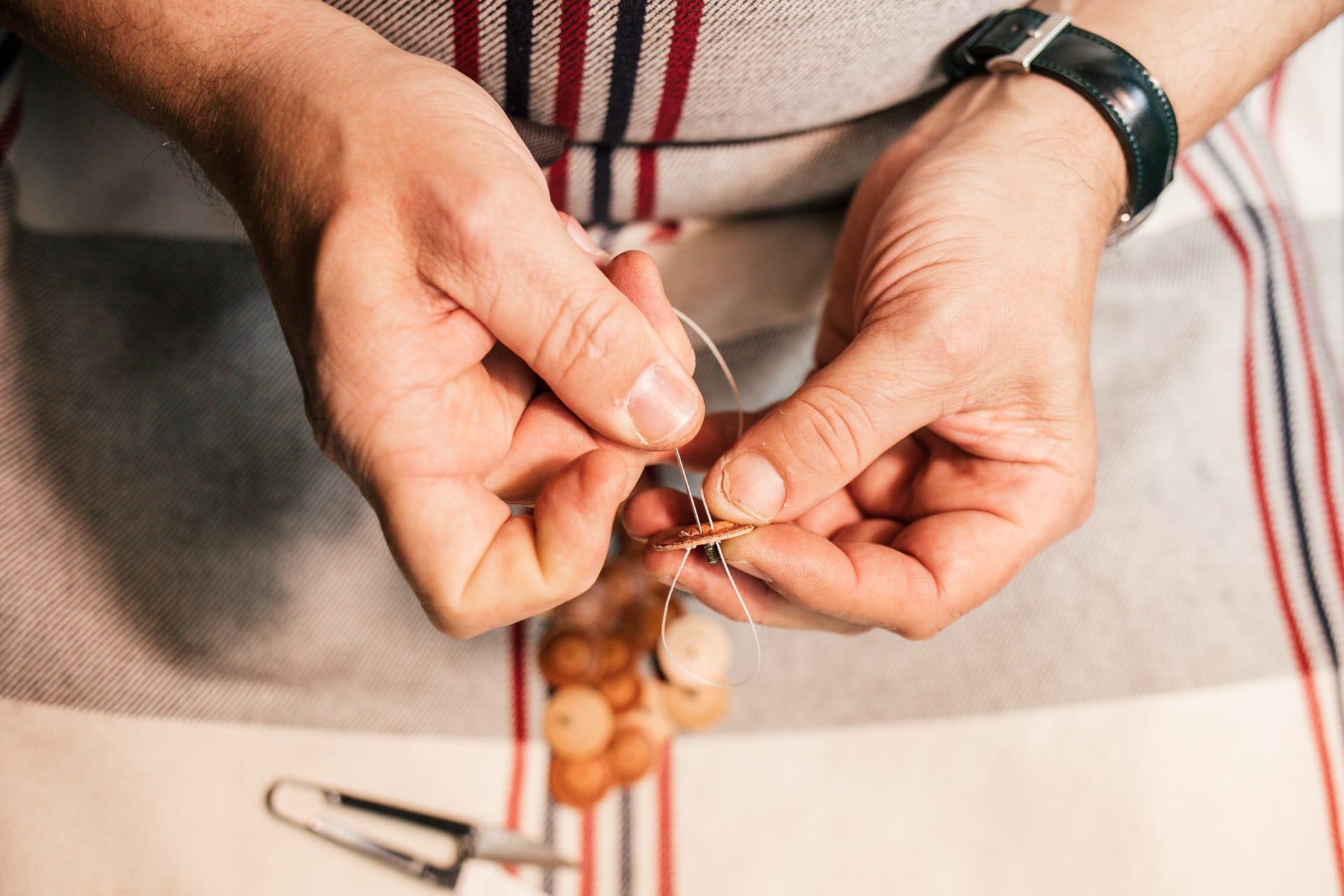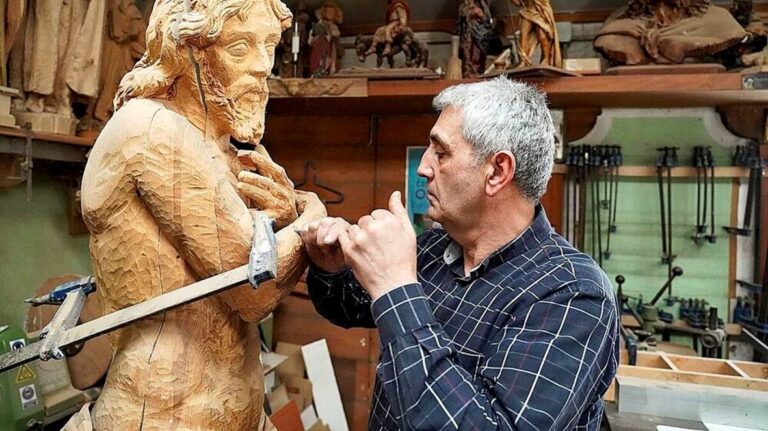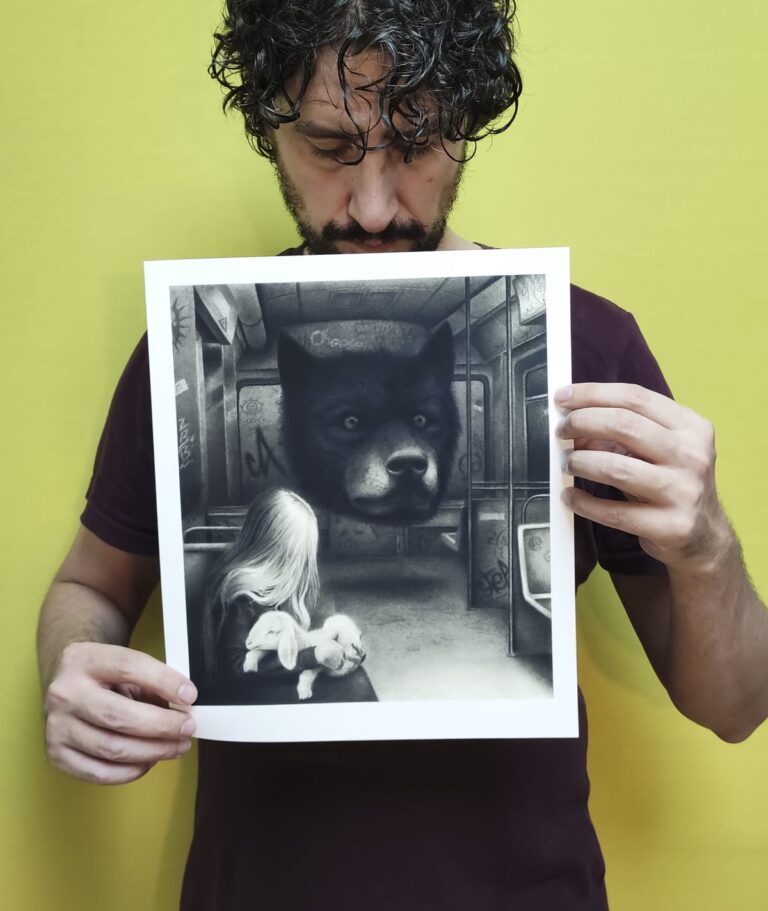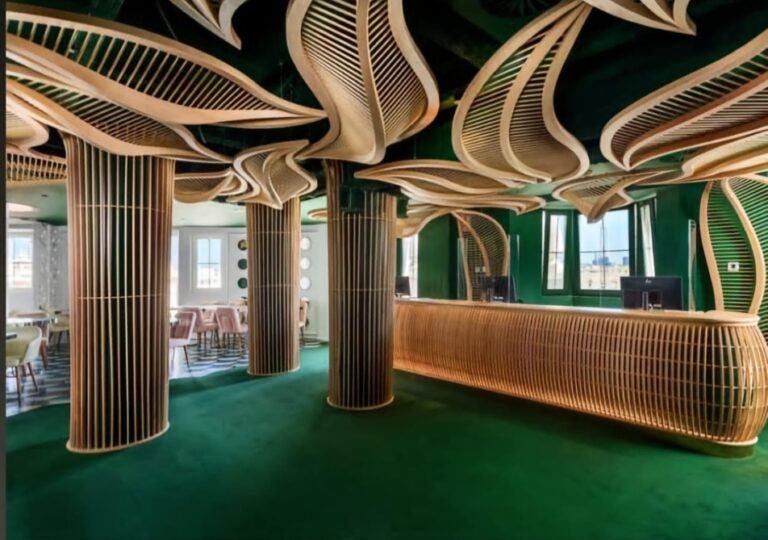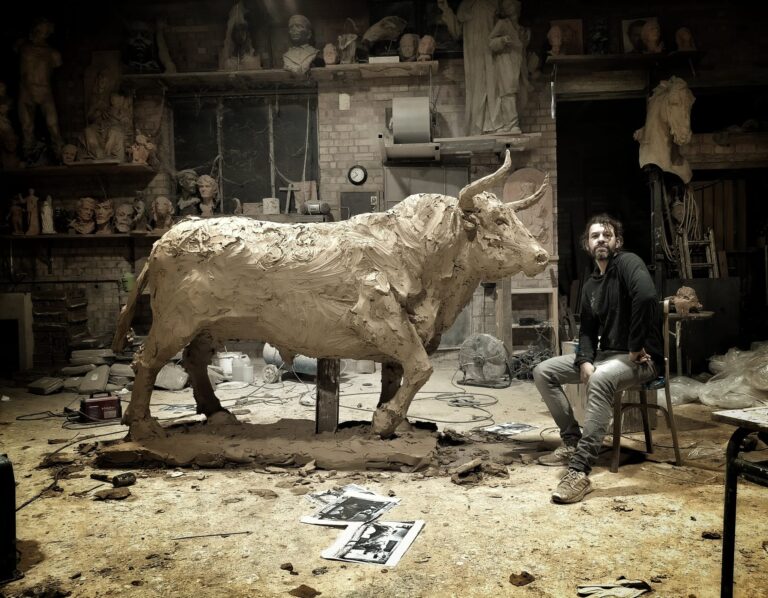Enrile
We need to put ourselves in context. Barrio de Los Remedios, between the Real de la Feria and the Guadalquivir. This leather workshop is located in that part of Seville, where, with great technique and care, immense patience, and attention to detail, different articles are made from this noble material.
Shoes or board games, belts or wallets. A controlled variety of smells, thicknesses, and colors, whose importance lies in the fact that each stitch, each cut, or each shine of the waxed fabric bears a seal of humanity and artisanal spirit given to it by the people in the apron, those who spend hours sitting making these pieces and for which they acquire the value they deserve.
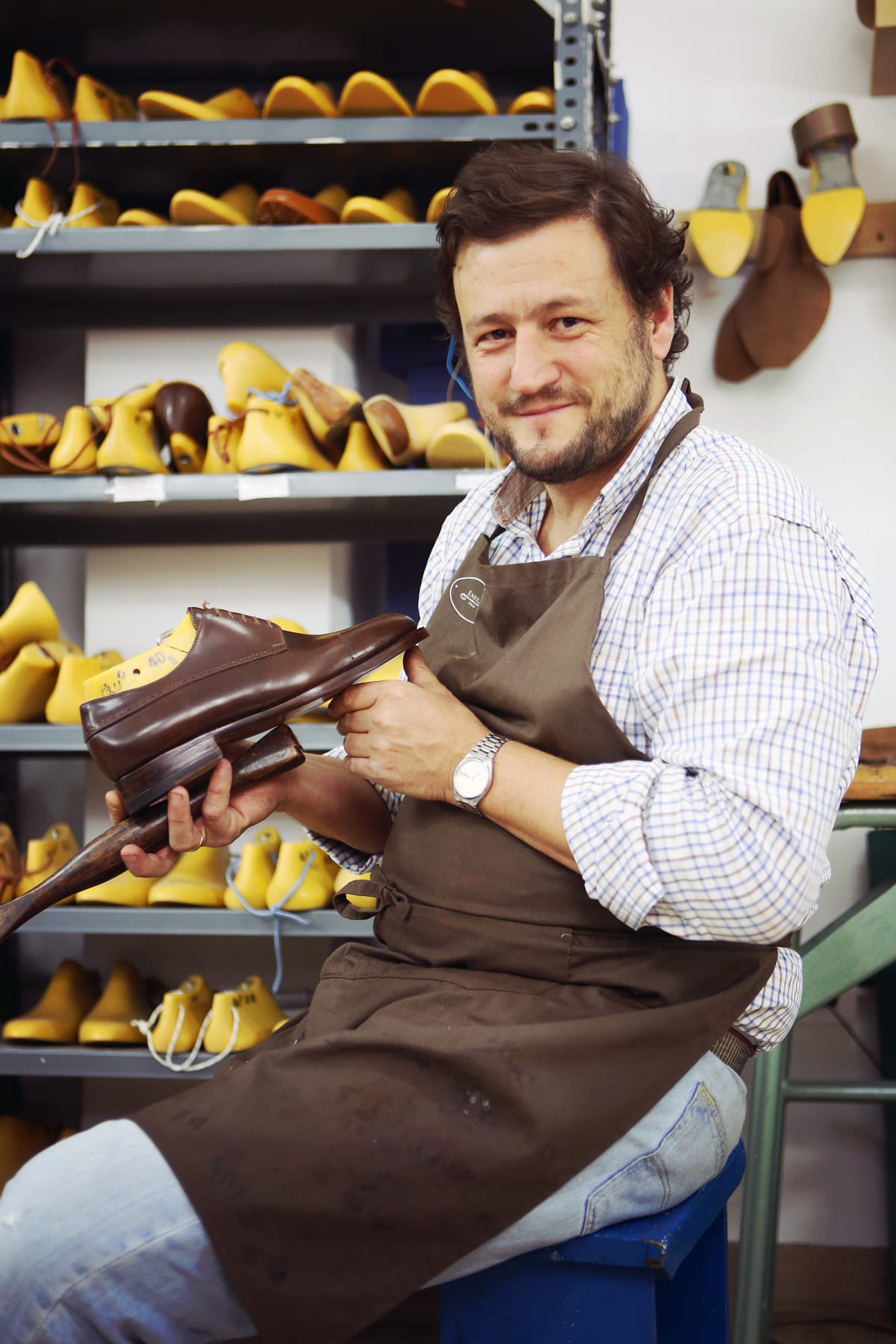
On this occasion, Antonio García Enrile, a Sevillian vocational craftsman and founder of this project almost thirty years ago, tells us more about his life and his workshop:
Hello Antonio. How did you start in the trade?
It all began as a hobby. I remember going with my father to buy beef scraps at the “Casa Parreño” store on C/ Zaragoza, I was barely fourteen or fifteen years old. At first, they were bracelets, and soon after, belts that I sold at school. No one in my family has been an artisan before.
How does the city of Seville inspire you in your work?
Seville is a unique city, not only because of its history. Its characteristic smell at certain times of the year, its light, and its deep-rooted traditions promote the continuity of various crafts.
In some of my pieces, you can see a nod to the Andalusian tradition of saddlery, cuts, seams, pineapples, and some seams where you can see the drawing of a grate or a saddle leaving the Real de la Feria.
Of the pieces you make, do you have any that are your favorite?
More than a specific piece, I recognize that what I truly love is the challenge of starting a new project from scratch. So, my favorite piece has changed over time.
The last creative challenge was a piece that I was asked to make for an art exhibition. I made what was -apparently- a leather candy box, but it was an invitation to reflection: That piece was a Faraday cage where, when you put your mobile phone in, all its signals were canceled, thus inviting us to communicate as we humans have always done and not miss a single detail of this world around us.

The image from the outside is that of a craftsman with an apron, sitting on a cane chair, in a traditional workshop full of scraps, but do you use modern, digital, or computer tools for the design or manufacture of your items?
La imagen es correcta, en lo sustancial el oficio no ha cambiado mucho. Sin embargo, soy muy partidario de usar todo lo que esté en nuestras manos para mejorar la artesanía. Actualmente usamos diseño en 3D para la posterior creación de piezas metálicas como hebillas, y la impresión 3D en plástico para moldes de corte.
Let's not forget the communication tools, such as social media, which we use very actively to transmit the culture of craftsmanship.
You have extensive training as a leather craftsman, to what extent is it important to control the work process?
I did a three-year vocational training in shoe design and pattern making and a short saddlery course. The rest I learned on my own. When I started, no official training existed and no one was willing to teach, although I have since found many people who have helped me and I have learned from books and even from old pieces that, through observation, can be very instructive.
The more you master the craft, the closer you are to excellence, however, I always keep this maxim alive: "Everything to learn, everything to discover, everything to do."
Do you know the farthest place in the world where there is an article of yours?
We have many clients around the world, but I think the furthest point is Australia.

Do you have any hobbies outside of your work?
In the past it was sports, but today my main hobby is cooking. I love it, and it is also a field where you can continually learn.
Is there any dream you have yet to fulfill, personally and/or professionally?
Of course! Many! I am a daydreamer
Our previous protagonist, David Rivas, left this question hanging: “How do you think you can improve or brighten people’s lives with your daily work?”
Let’s keep in mind that excellent craftsmanship is not a basic necessity, so when someone orders or buys a product of this type, they put all their enthusiasm into it and want the person who receives it to also receive that emotion. Our contribution is to transmit those emotions through the piece and a service that lives up to it.
What are your leathers like?
Most of our leathers are 100% vegetable-tanned, which is a traditional tanning process using tannins extracted from the bark of oak, holm oak, or mimosa. It is the most environmentally friendly model.
We try to use national leathers, however, we must go to the Horween company in Chicago to obtain our cordovan or to some European tanneries for certain boxcalf.
For us, it is very important to have a broad vision of ecological and sustainable awareness. Consuming products “made to last” is undoubtedly a philosophy against unconscious consumerism, which does so much damage to the environment.
On the other hand, making an excellent product prevents us from fully utilizing the leather, so the waste is not thrown away, but rather sold through a distributor.
How do you see the future of Andalusian leather goods?
Andalusian leather goods are in better health than ever. It is recognized worldwide for its quality and it is fair to recognize that the people of Ubrique and its artisans are largely responsible for this good reputation.
I would also like to denounce that some Spanish companies market products from third countries disguising them as Spanish, and this is detrimental to the good reputation achieved with so much effort.
Can you leave us a question for the next protagonist to answer?
Sure, do you think you have dedicated yourself to this trade by vocation?

